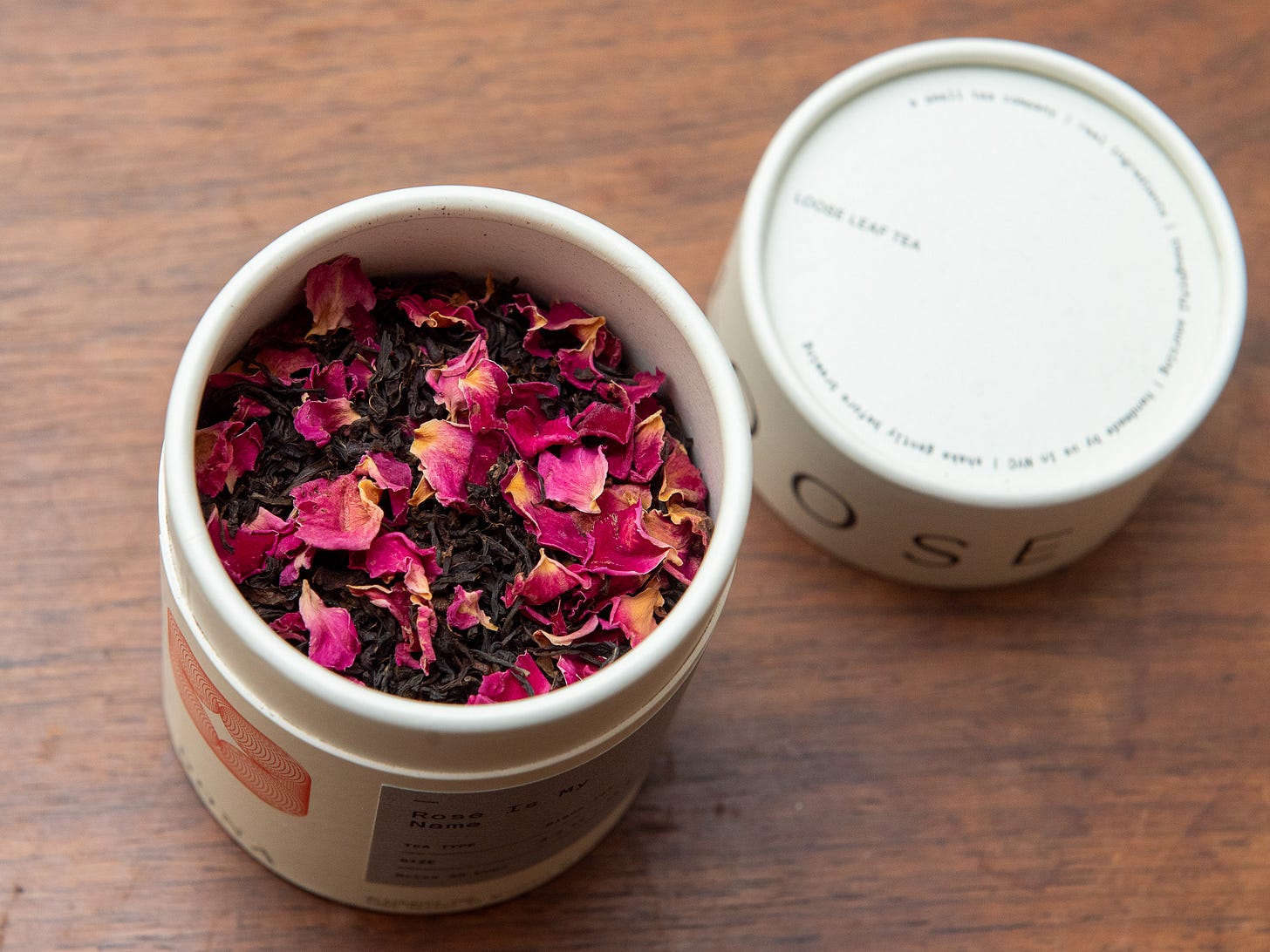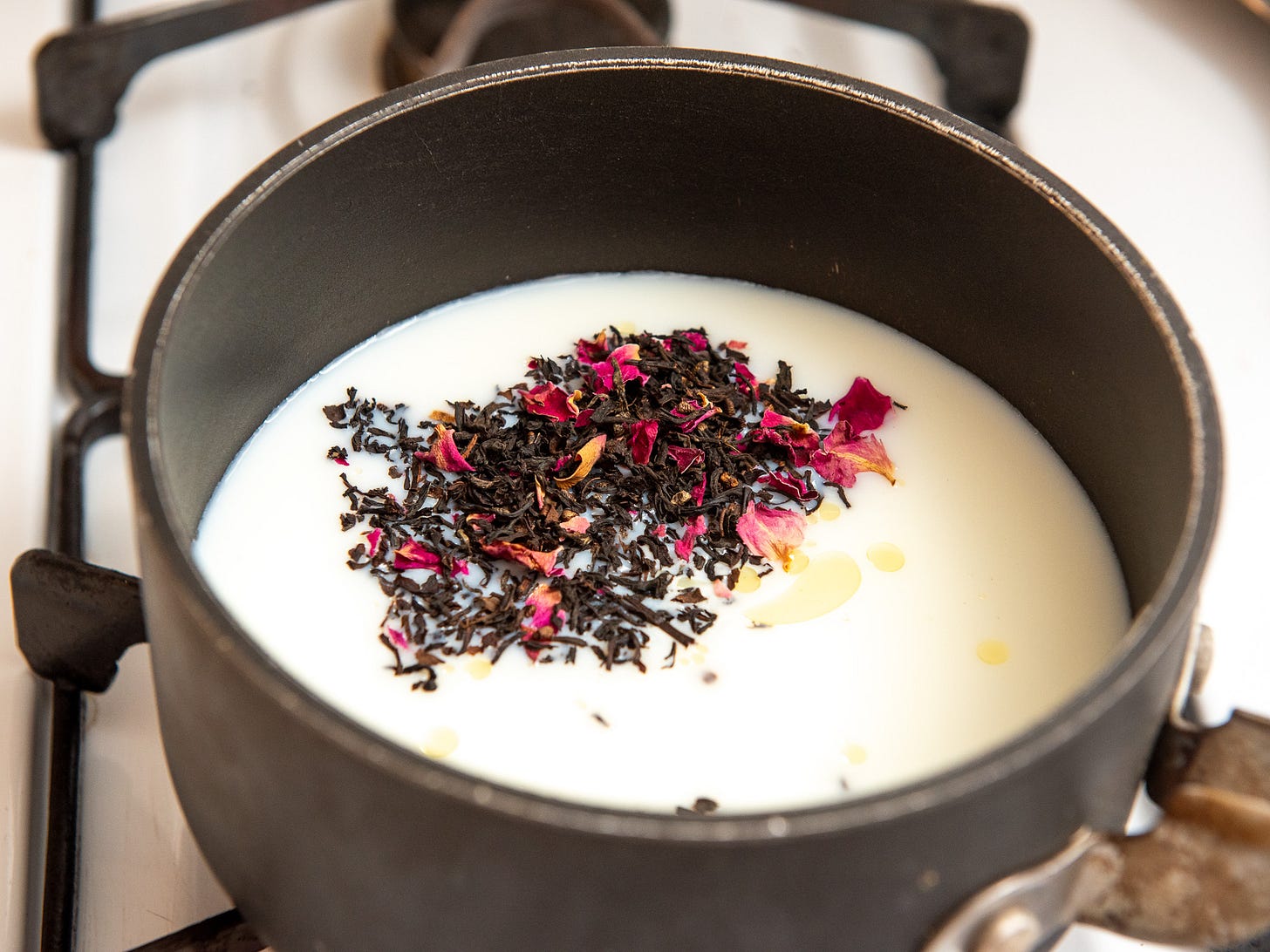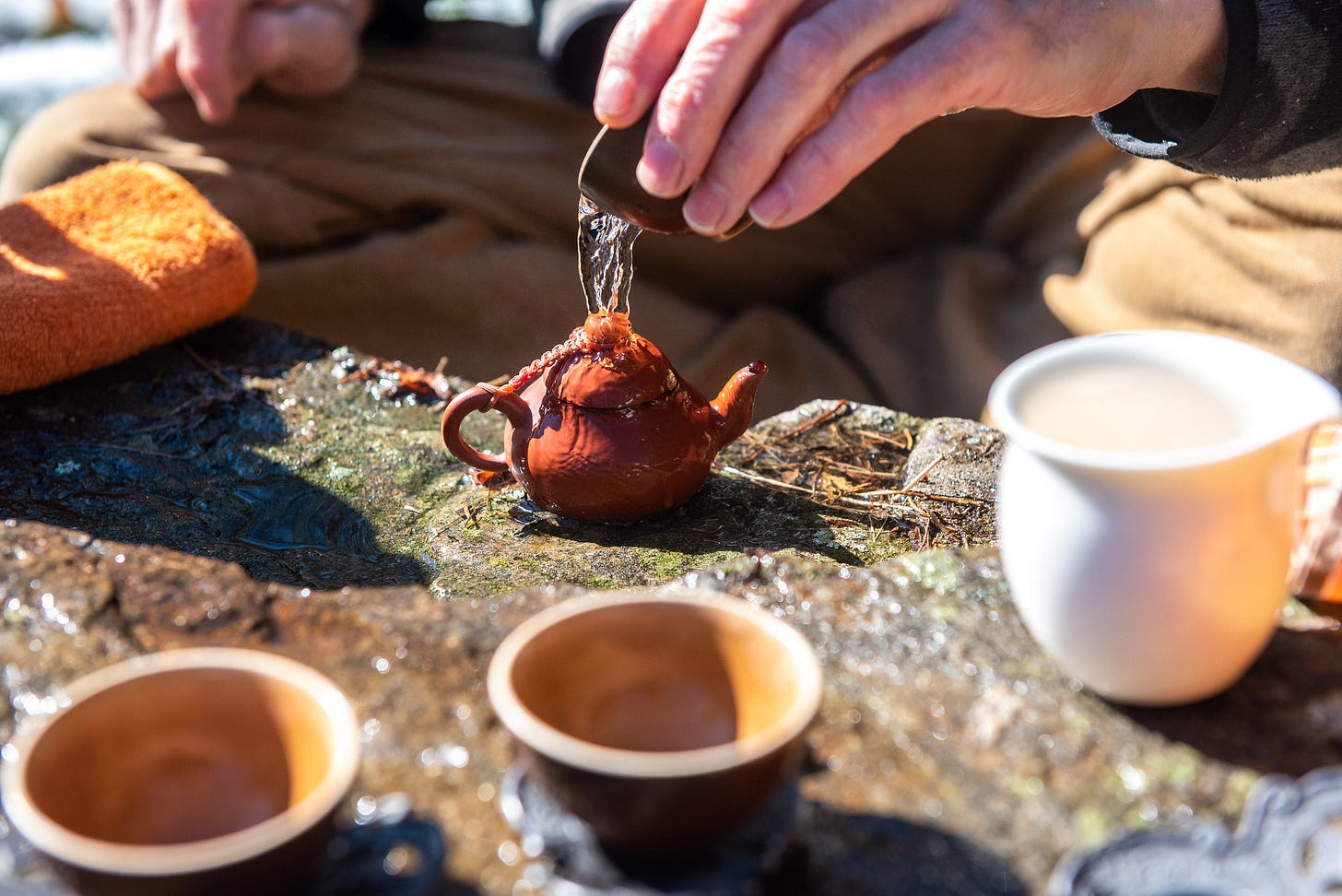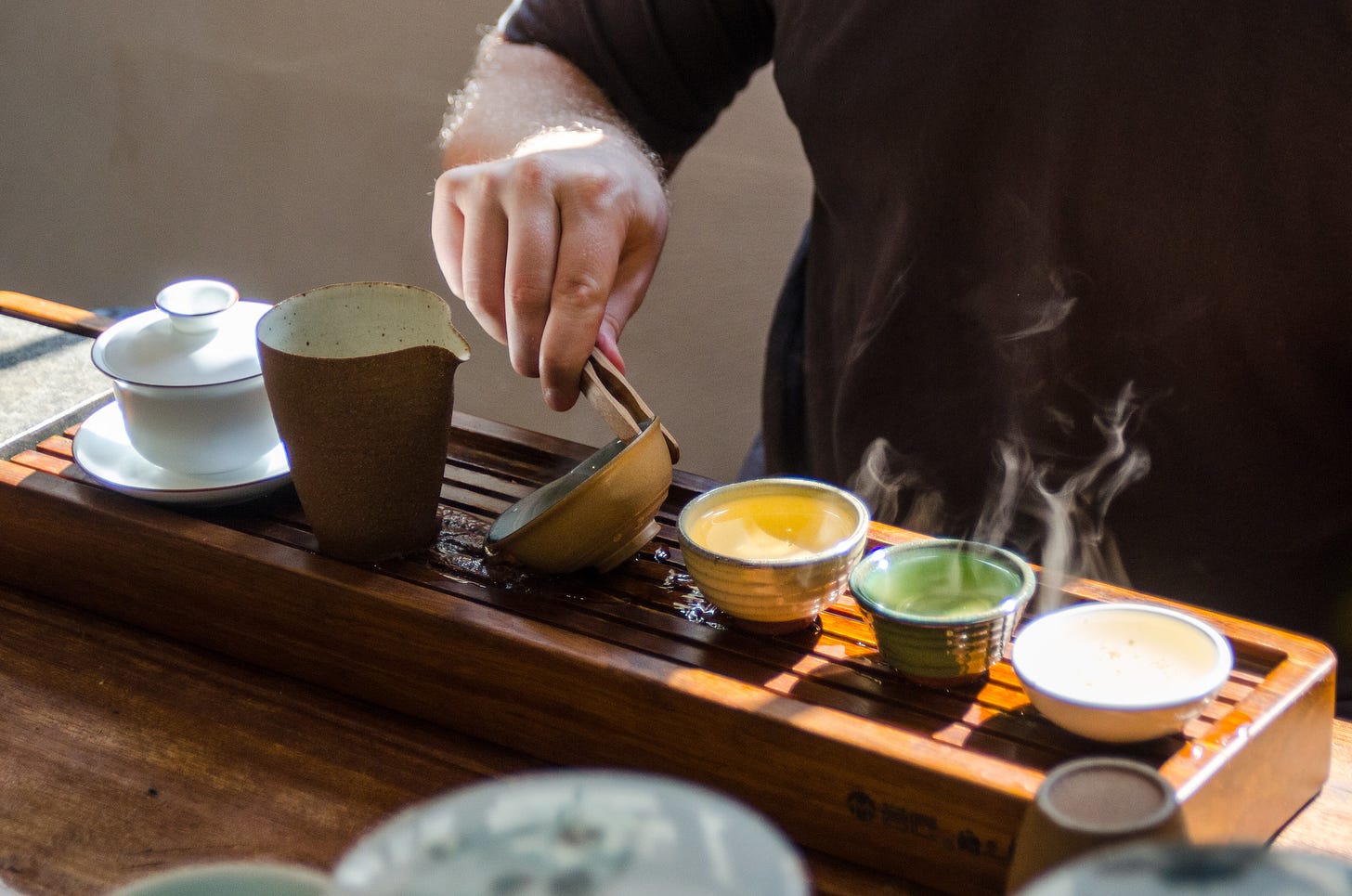A rose tea that doesn't taste like grandma
Spiced and scented Assam + the mechanics of tea steeping.
Calling all cardamom fans
The tea: Rose is my name black tea, sold by Dona. $15 for 90g.
It’s been a while since the last spiced tea featured on Leafhopper, and I keep returning to brew more of this blend. The base tea is from Assam, and it’s made in the traditional whole leaf orthodox manner rather than the pelletized crush-tear-curl (CTC) style that dominates this corner of India. Orthodox tea requires more time and specialized labor than CTC processing. It yields only a tiny fraction of a CTC factory’s output. But for tea producers that want to avoid the race-to-the-bottom price wars of commodity CTC manufacturing, orthodox teas offer the opportunity to earn a premium on quality leaf. The difference in the cup is clear. This Assam is full and rich with ripe fruit flavors. Its natural malty sweetness doesn’t need sugar, and there’s none of the astringent bite that often accompanies teas from this low elevation, sun soaked region.
Of course the main draw to this blend is the added spices: ample pink rose petals with an arresting fragrance, supported by cardamom seeds that contribute powerful citrus and resin notes. I’m impressed with the blend’s balance. The tea and supporting ingredients work together, rather than one dominating the other, as is usually the case with spiced and scented teas. It seems this is partially due to how the rose petals are dried, in a solar dehydrator that preserves more of their delicate aroma. I get a clear impression of fresh flowers every time I take a sip.
The source: Dona is most famous for their masala chai concentrates, but recently they’ve expanded into looseleaf tea. This blend is made in-house with tea from the Chota Tingrai Estate, organic rose petals from Tamil Nadu, and cardamom from a new grower in Honduras. I asked Dona’s head of education Navdeep Kaur what drew the company to Chota Tingrai, and she said she was impressed by the garden’s commitment to agricultural and financial sustainability. In particular she spoke about their vermicomposting and waste management programs—not the sexiest topics for a tea lover, but critical for running an organic tea farm. Kaur also pointed out how the garden’s owners prioritize local talent development, which gives workers a greater stake in the company with pathways to professional advancement. That’s important too. As we covered earlier this month, nurturing and retaining skilled talent is a big problem in Darjeeling. It’s good to see a producer be proactive about it.
To brew: This tea is as close to bulletproof as it gets. Low or high dosage, a 2 or 5 minute steep—I’ve yet to taste an unpalatably astringent brew. For some Assam lovers who want a bit of tannic structure, this may be something of a detriment. Assam teas are known for their burly briskness and these leaves are almost demure. But I think that makes it a versatile blend. My favorite method for steeping this tea is on the stove with a tablespoon or two of leaf simmered in equal parts water and whole milk. Bring the mix to a boil, then reduce to a gentle simmer for 5 to 10 minutes. You’ll be rewarded with a creamy and elegant chai that’s lighter than more heavily spiced masala chai styles.
Ask a Tea Person: How much does steeping time matter?
Welcome back to Leafhopper’s tea advice column, where I answer questions from brewers like you. View previous entries in the series here, and submit your own question by emailing max.falkowitz@gmail.com with “Ask a Tea Person” in the subject line.
I recently bought a gaiwan and have been brewing teas gongfu style. How do you decide how long a tea should brew for each steep? Do you really sit there with a stopwatch? I’m curious how much you think exact steeping times matter and how you decide to brew a tea. — Sam T.
Great question Sam, and one I’ve wondered since my early tea days when scoured the old Teachat forums for knowledge. Gongfu cha as a concept only dates back 100 to 150 years. Much of what we call “traditional” Chinese tea culture is a reconstruction and recombination of many regional tea practices, rather than any single unbroken lineage. Consider the gaiwan itself. Nowadays, it’s a standard vessel for brewing gongfu tea, but it was originally designed as a single serving tea bowl and brewer. A drinker would steep tea in the bowl, then sip from it, using the lid as a filter. You can still find old timers drinking tea this way in teahouses around China and Hong Kong.
For the uninitiated, gongfu cha is the method of brewing a lot of tea with a little water in a series of quick steeps—as few as two or three or as many as two or three dozen. There are many advantages to this approach. You get a more flavorful and complex cup as there’s literally more dissolved tea stuff in your brew. You also have more control over the taste and texture of your tea, allowing for greater nuance. If you want to emphasize the aromatics of a given tea, you can do that. If you want to accentuate its rich body, you can do that too, all by tweaking your brewing parameters. Perhaps most important is the way gongfu brewing changes the tea experience from a single cup to a whole narrative arc of flavor. Each steeping will taste a little different, and your final cup may seem like a wholly separate tea from the first.
This is what it’s like to drive with a manual gearshift rather than an automatic transmission. You’re in control and the tea session answers to you. Or so I’m told. I never learned how to drive.
Keep reading with a 7-day free trial
Subscribe to Leafhopper to keep reading this post and get 7 days of free access to the full post archives.









